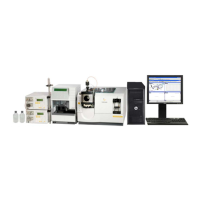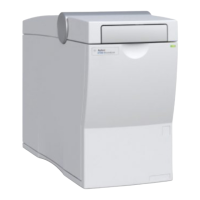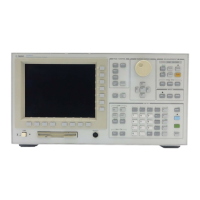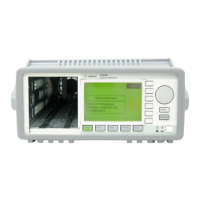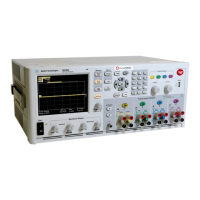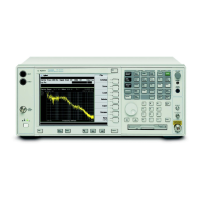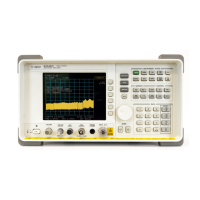CALCulate[1|2|3|4]:MARKer:DTABle[:DATA]? query
Returns the dependent values in the specified data table.
Query Syntax: CALCulate[1|2|3|4]:MARKer:DTABle[:DATA]?
Example Statements: OUTPUT 711;"CALCULATE4:MARK:DTAB:DATA?"
OUTPUT 711;"calc4:marker:dtab?"
Return Format: <DEF_BLOCK>
When data is ASCII-encoded, (FORMat ASCii) <DEF_BLOCK> takes the following form:
<DEF_BLOCK> ::= [<Y value>,<Y value>...]
When data is binary-encoded, (FORMat REAL) <DEF_BLOCK> takes the following form:
<DEF_BLOCK> ::= #<byte><length_bytes>[<Y value>, <Y value>...]
<byte> ::= one ASCII-encoded byte specifying the number of
length bytes to follow
<length_bytes> ::= ASCII-encoded bytes specifying the number of
data bytes to follow
The following definitions apply to both ASCII- and binary-encoded data.
<Y value> ::= a real number
limits: -9.9e+37 : 9.9e+37
Attribute Summary: Option: not applicable
Synchronization Required: no
Preset State: not applicable
SCPI Compliance: instrument-specific
Description:
CALCulate[1|2|3|4] specifies the data table. Send CALC1 to specify the data table appearing in trace box
A, CALC2 to specify B, CALC3 to specify C, and CALC4 to specify D. If you do not send the optional
specifier, the command defaults to the data table appearing in trace box A.
For most types of measurement data and trace coordinates, all but Nyquist diagrams, polar diagrams, and
orbit diagrams, the data table consists of three columns. The first column contains the label, the second
column contains the independent value, and the third column contains the dependent value. This
command returns the dependent values that appear in the third column. Use the command
“CALC:MARK:Y? UNIT” to determine the unit.
For Nyquist diagrams, the data table consists of four columns. The first column contains the label, the
second column contains the independent value (frequency), the third column contains the real value, and
the fourth column contains the imaginary value. This command returns the real and imaginary values.
Use the “CALC:MARK:X? UNIT” command to determine the unit associated with the real values. Use
the “CALC:MARK:Y? UNIT” command to determine the unit associated with the imaginary values.
CALCulate
6-59
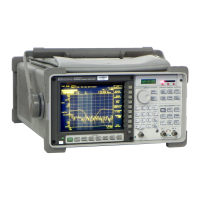
